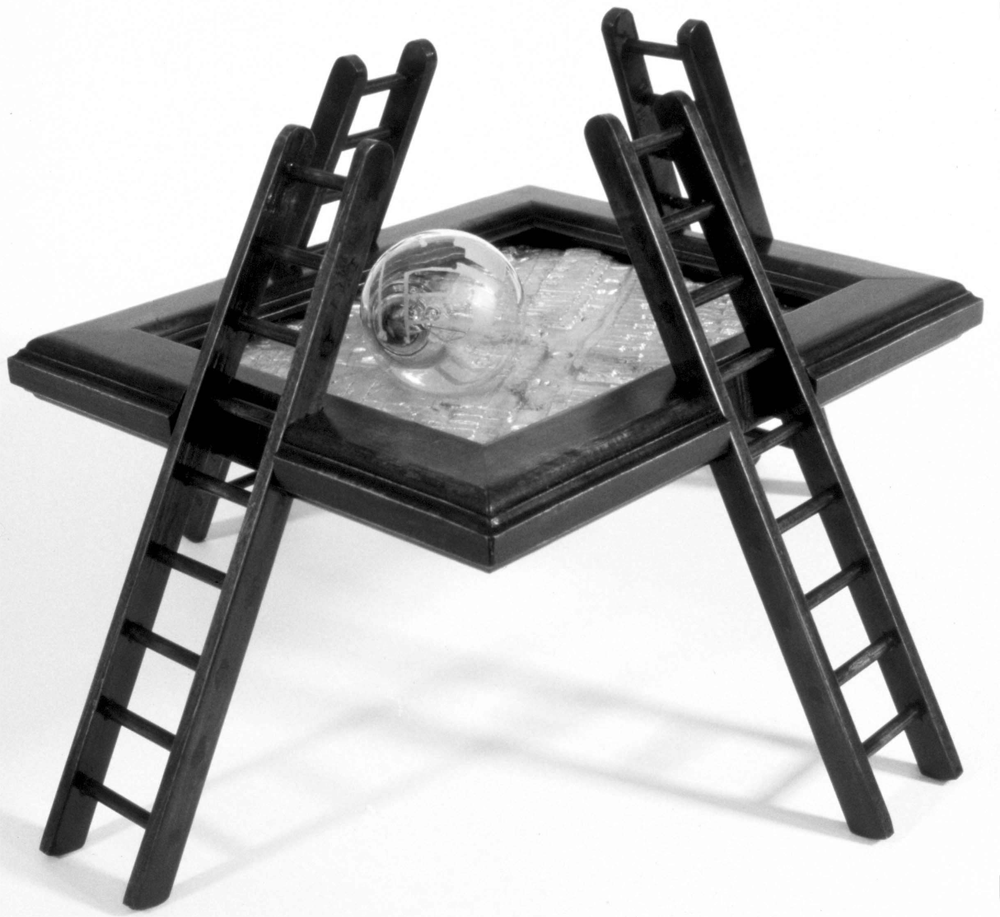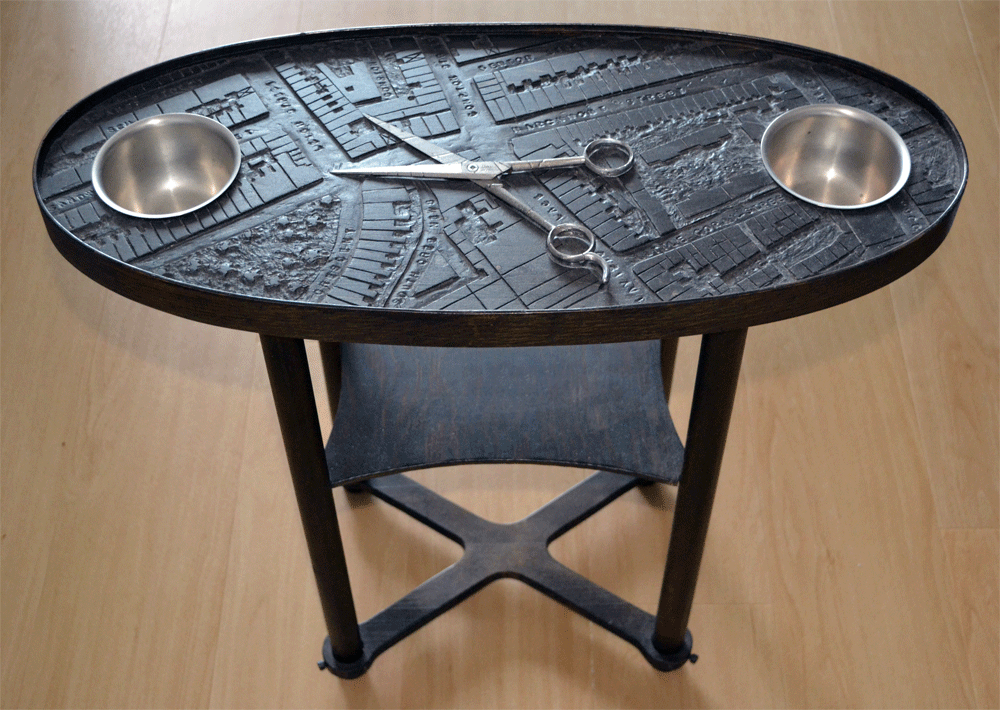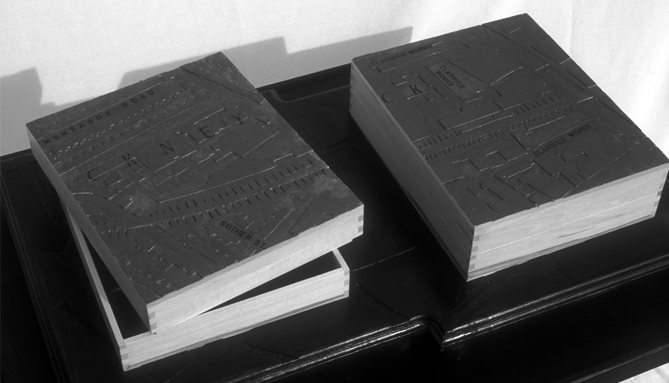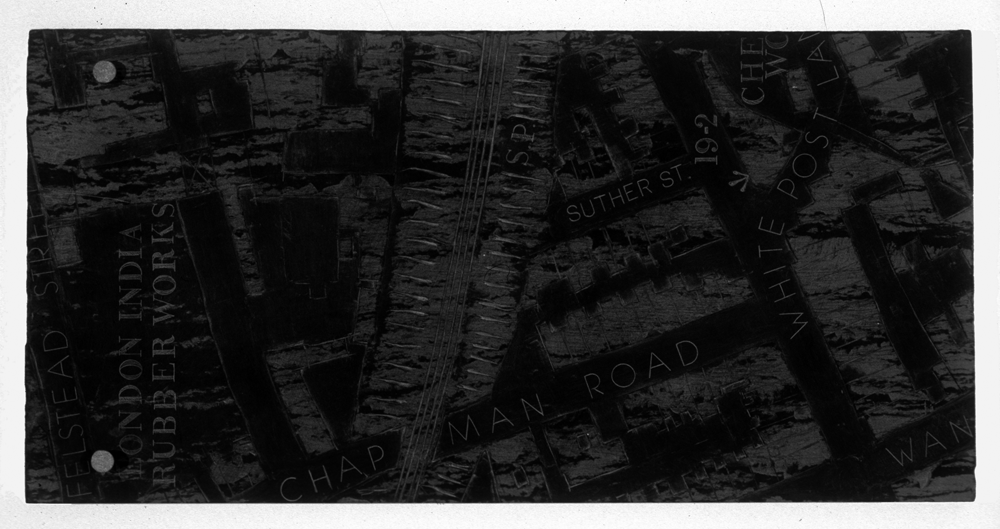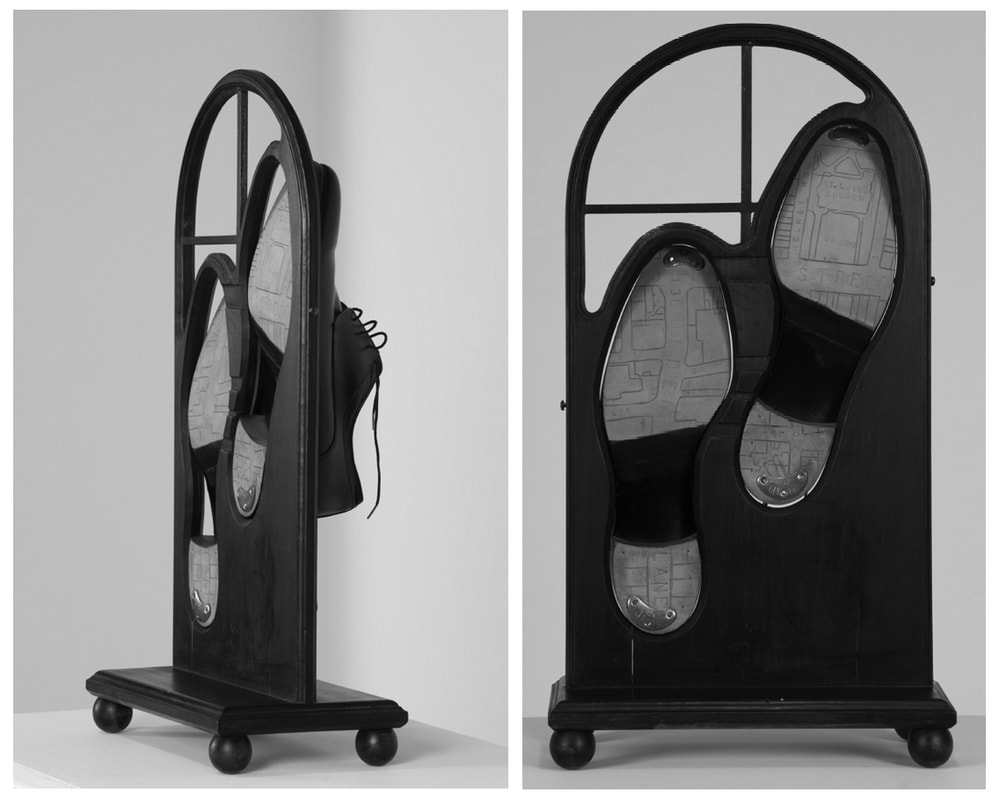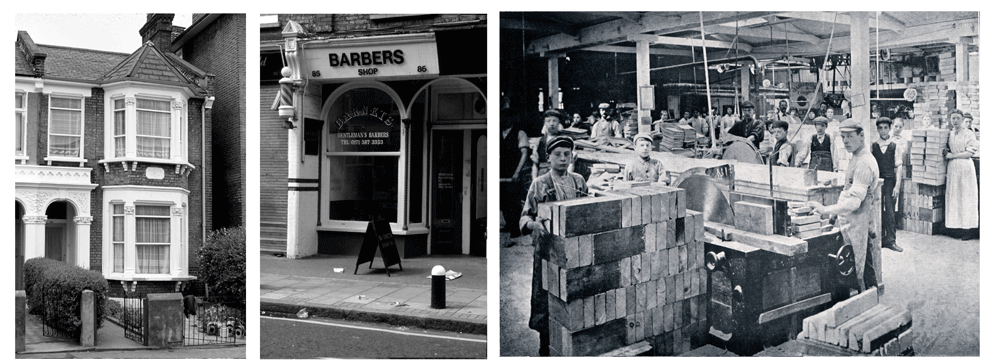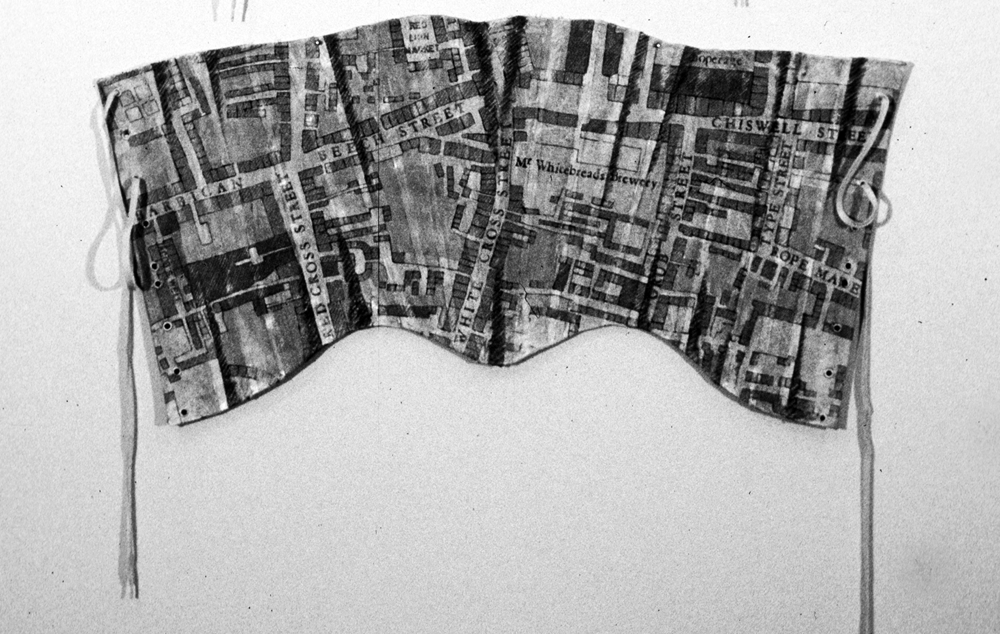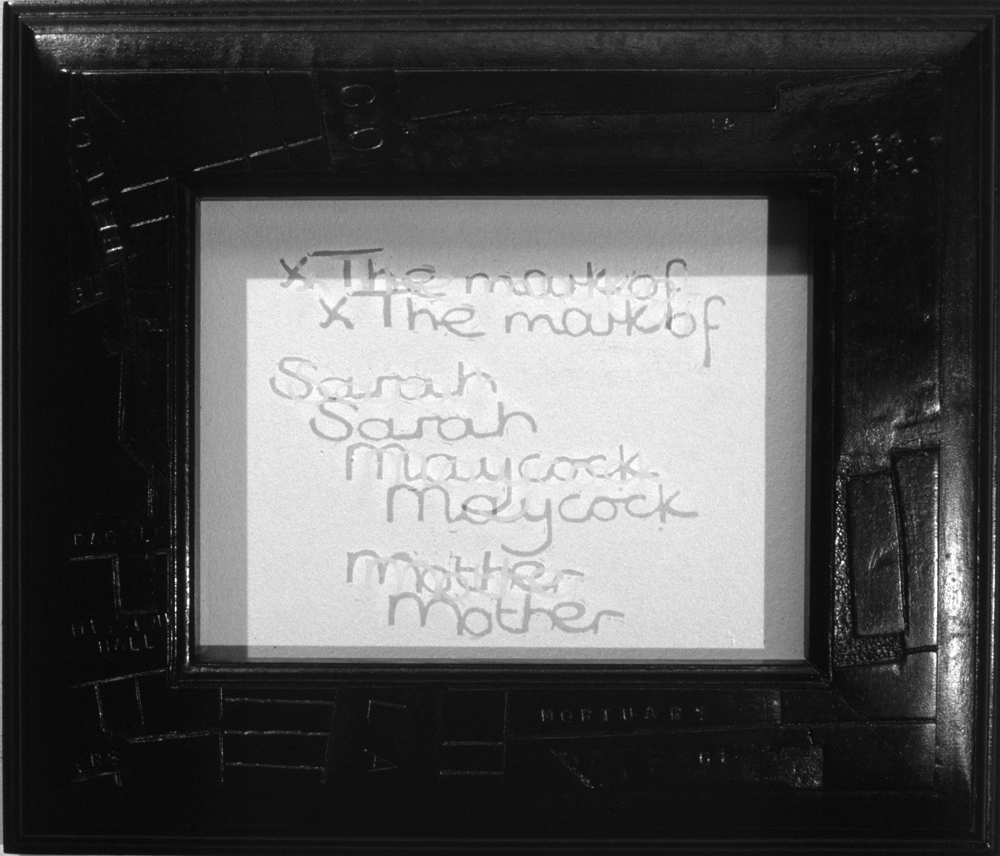genealogy-based work
By 1995, Gill and I had researched family history for around twenty years but it was only when I connected the data (birth, marriage, death and census records) to Victorian maps that I recognized the potential for generating visual representations of that research. Hoping that an account of this tangential use of research may be of interest to genealogists, I wrote an account of my activity for Family Tree magazine (Dec. 1999). The date of publication anticipated the exhibition of my work at Sutton House in Hackney, London. I had approached Sutton House that, at the time included gallery space, as it is located in a part of London where my ancestors lived and worked. Essentially, I liked the idea that my work would be exhibited in a building known to my antecedents; although, given the building's status, it is unlikely that they would have ventured inside. That said, in many ways I thought of the venue as bringing the work home. (see below for a link to the FTM article)
The work:
Genealogy Series #1 comprises seven shirt drawings (17x24” ink & chalk pastel on paper) that connote heads of household as identified in census records. The shirts, seven styles (collarless, buttoned down, etc.), are drawn with black ink and coloured pencil and chalk-pastel colours identifying the streets where family members lived. Each shirt is a map.
The work:
Genealogy Series #1 comprises seven shirt drawings (17x24” ink & chalk pastel on paper) that connote heads of household as identified in census records. The shirts, seven styles (collarless, buttoned down, etc.), are drawn with black ink and coloured pencil and chalk-pastel colours identifying the streets where family members lived. Each shirt is a map.
Genealogy Series #2 makes use of a different aspect of the data. Both as image and materials, five small sculptures and one canvas tryptic concentrate on the occupation of each head of household.
My father, who for most of his working life was an electrician, is represented by a small sculpture comprising ladders, a cast aluminum map and a light bulb. It locates the family on Orford Road, Walthamstow. At that time, he was employed by the L.E.B (London Electricity Board) to replace burnt out street light bulbs, hence the ladders. To ensure material authenticity, I sent to England for a British light bulb with a bayonet fitting as opposed to the North American screw thread.
My father, who for most of his working life was an electrician, is represented by a small sculpture comprising ladders, a cast aluminum map and a light bulb. It locates the family on Orford Road, Walthamstow. At that time, he was employed by the L.E.B (London Electricity Board) to replace burnt out street light bulbs, hence the ladders. To ensure material authenticity, I sent to England for a British light bulb with a bayonet fitting as opposed to the North American screw thread.
My grandfather, a man of many occupations was, at one time, a hairdresser. He is represented by a scaled-down version of his barber table along with the primary tool of his trade. A map is carved on the table top and etched into scissors. The intersection of the blades marks the location of his work place, Blady's Barber shop - X marks the spot.
His father, my great grandfather, apprenticed as a box maker and became foreman of Clarnico's wooden-box department (see the banner image on the Home page). He is represented by two finger-jointed boxes that I made in the NSCAD wood shop, the lids of which are carved with a map that is painted pewter to suggest printing blocks.
His father, my 2 x great grandfather, was a slater and is represented by a map carved into a small slab of slate. This turned out to be a wonderful material to work with in that, as I cut into the surface, the blades self-honed. The format is two-square like a regular roofing slate and was displayed vertically on a wood frame suggestive of a roof truss. An amusing account of my research into slate can be found here.
The slater's father was a shoemaker. For this piece I persuaded a local cobbler to show me how and then permit me to repair my own shoes. The map that is carved into the new leather soles locates the church in which my 3 x grandparents were married. The shoes are set into a free-standing frame evocative of the architectural style of the church window. The skeleton of the bombed (WW2) church still exists. The Halifax cobbler, recognising that the soles of my shoes were virtually new, must have wondered why I was wasting time, energy and money on such a project. Nonetheless, he was generous with his knowledge, his time and his tools.
The Shoemaker images below are courtesy of Steve Farmer Photography.
The Shoemaker images below are courtesy of Steve Farmer Photography.
When the sculptures (series #2) were exhibited in the Art Gallery of Nova Scotia, above and behind each one was a large, screen-printed poster contextualising each work. They are:
85 Orford Road (electrician); Blady's (hair dresser); Clarnico (box maker).
85 Orford Road (electrician); Blady's (hair dresser); Clarnico (box maker).
hammer catalogue (slater) St. Luke parish church (shoemaker).
Finally, and for the only female who appeared as head of household in census records, I needed to dwell in a particularly unfamiliar working environment. Ann (Cale) Maycock was a corset (stay) maker. The 'collaboration' with my 3 x great grandmother Ann combined canvas representations of the garment styles, fashionable when Ann was supporting her three children, with my acrylic paint. Her husband, a shoemaker, appears to have disappeared from the records before 1841. The piece made for Ann is displayed flat on the wall as a vertical tryptic, hanging one above the other in chronological order of the census records: 1841, 51 & 61. Shown below is 1841.
Genealogy Series #3 comprises eight foot-stools. These are canvas-topped frames, foam-stuffed and upholstered with buttons that identify the streets on which the family lived. Why footstools? In part, because I thought that they could represent a small degree of domestic comfort available at the end of a long working day.
Finally, Genealogy Series #4 makes use of another data group in that each work incorporates a family member's 'signature'. As a maker of marks, I am particularly interested in marks that are mere X's: the signatures of those unable to write their own names. What also interests me is that many of the marks, both the Xs and the signatures in official records, are often transcriptions. In effect, a third-party's mark has entered the chain. As a result, many of the marks I collected are clearly not those of my ancestors. By etching the signatures into glass, light becomes the visual mediator. Signatures come and go. They are elusive yet under two light sources are duplicated. The frames that surround the glass continue the mapping thread in that each frame is carved to define and illustrate the particular part of London where the event of note occurred.
"Maycock’s work, assemblages and drawings laden with mapped references, narrative objects, and biographical details about family members, function as a complex, highly coded and referential work which, for their modest scale, are densely packed with spatial, social, economic and political mappings". Peter Dykhuis. From the catalogue essay for Relative Marks, Relative Surfaces. Art Gallery of Nova Scotia. December 2000 - February 2001

